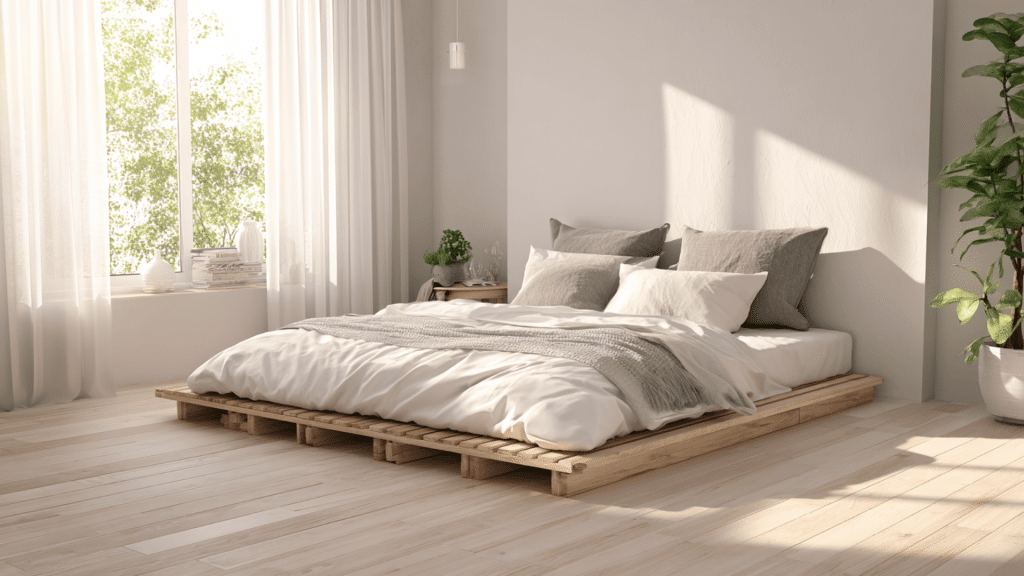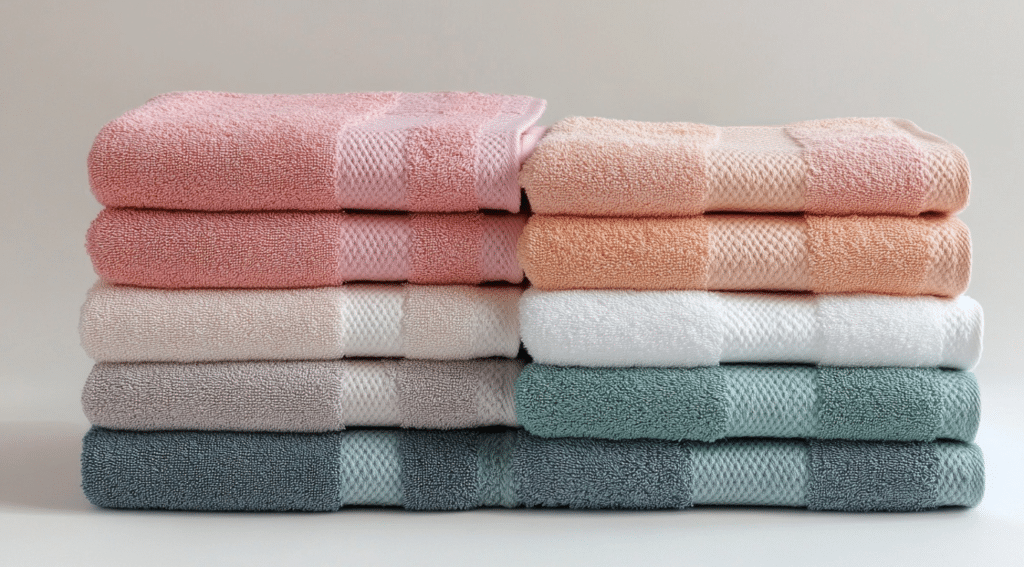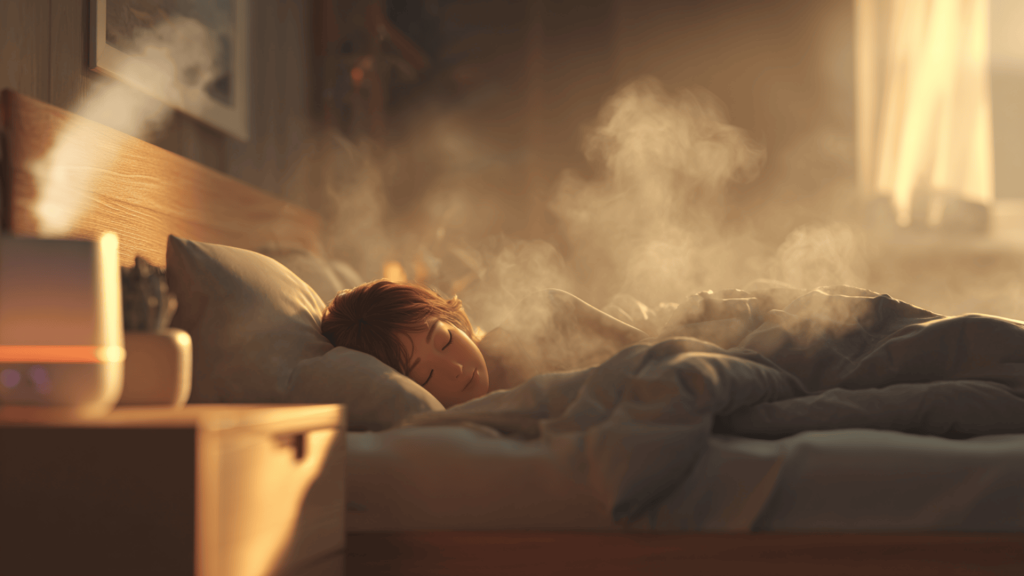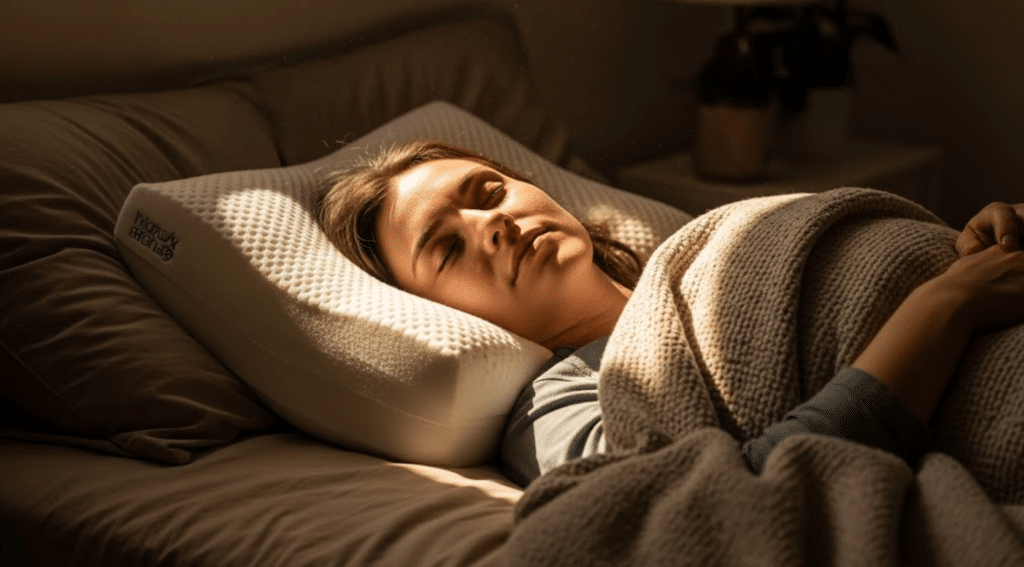Ever thought about putting your mattress directly on the floor? I get why, it’s simple, affordable, and sometimes feels like the easiest choice. But if it’s not done right, it can lead to moisture problems, mold, or just plain discomfort.
Many people aren’t sure what to put under a mattress on the floor to keep it protected, supported, and comfortable.
I’ll walk you through the best options, from affordable DIY fixes to smart store-bought solutions. You’ll see how to match your choice to your floor type, climate, and space, plus get tips to keep your mattress fresh for years.
If you need better airflow, more support, or extra hygiene, there’s an option here that will make your setup healthier and more comfortable. Let’s find the one that works for you.
Why You Need Something Under Your Mattress
Placing a mattress directly on the floor may seem simple, but it can create hidden problems over time. Adding a layer or base underneath helps your mattress stay clean, comfortable, and long-lasting. Here’s how layering helps:
Mold and Mildew Prevention
Moisture from the floor or the air can get trapped under your mattress. Without a barrier, this dampness can lead to mold or mildew. A base or breathable layer allows air to move and keeps moisture from building up.
Better Airflow and Temperature Regulation
Mattresses need ventilation to stay fresh. A slatted base, pallets, or mats allow air to flow, which helps control temperature and reduces odor. This is especially useful in humid or hot climates.
Comfort and Spinal Support
The floor is hard and unyielding. Placing a supportive layer under your mattress can provide better pressure relief and improve spinal alignment, leading to a more comfortable sleep.
Hygiene and Cleanliness
Being close to the floor means more dust, dirt, and allergens. A base keeps your mattress lifted, helping it stay cleaner for longer and making it easier to vacuum underneath.
Warranty Considerations
Some mattress warranties are voided if the mattress rests directly on the floor. Using a proper foundation or base can help protect your investment and keep the warranty valid
What to Put Under a Mattress on the Floor
Adding the right layer between your mattress and the floor can improve comfort, protect against damage, and help your bed last longer. Below are ten of the most practical and effective choices.
1. Moisture Barriers
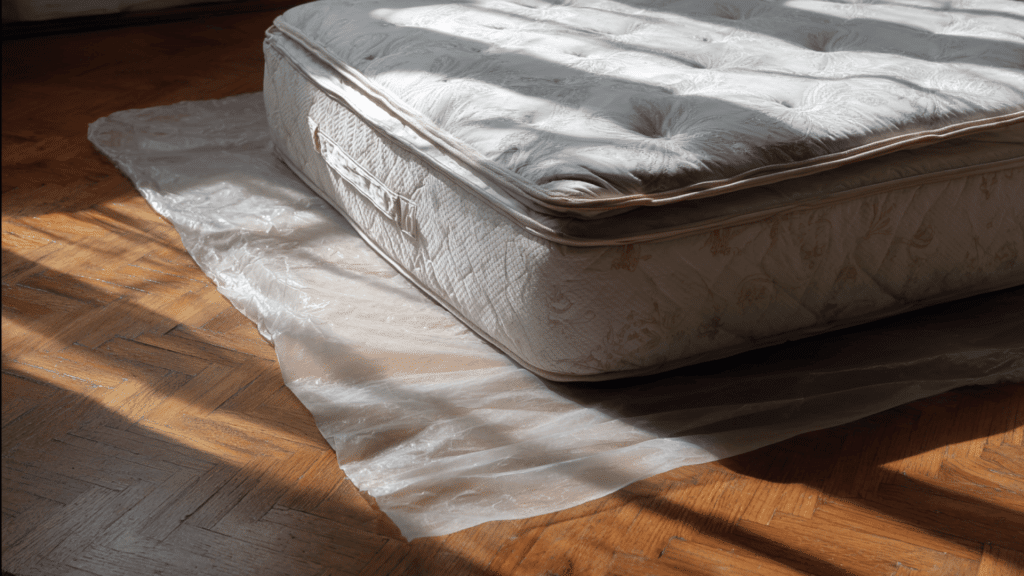
A moisture barrier is the first line of defense against dampness. Polyethylene sheets and waterproof underlays block water vapor from reaching your mattress, keeping mold and mildew away.
Even thick cardboard can be used as a short-term fix, but it wears down quickly and can attract pests if it gets wet.
This option is best for those who want a quick, budget-friendly layer without making structural changes to their setup.
2. Slatted Bases
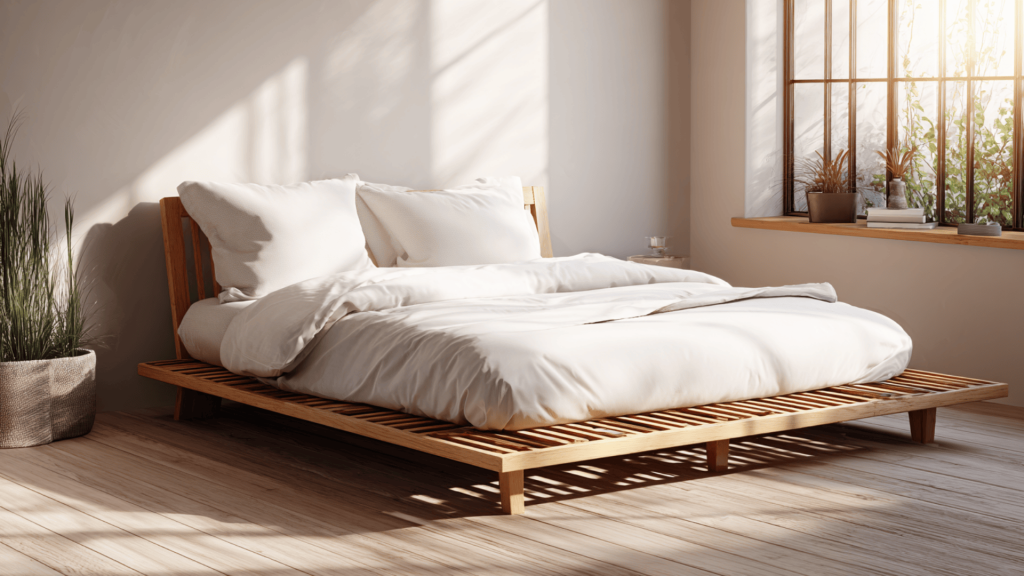
Slatted bases keep your mattress slightly elevated while allowing airflow underneath. This prevents heat buildup, reduces moisture, and helps extend mattress life.
They can be bought ready-made in metal or wood, or built as a simple DIY project. They’re especially good for memory foam and hybrid mattresses, which need ventilation to avoid sagging.
3. Tatami Mats and Coir Mats
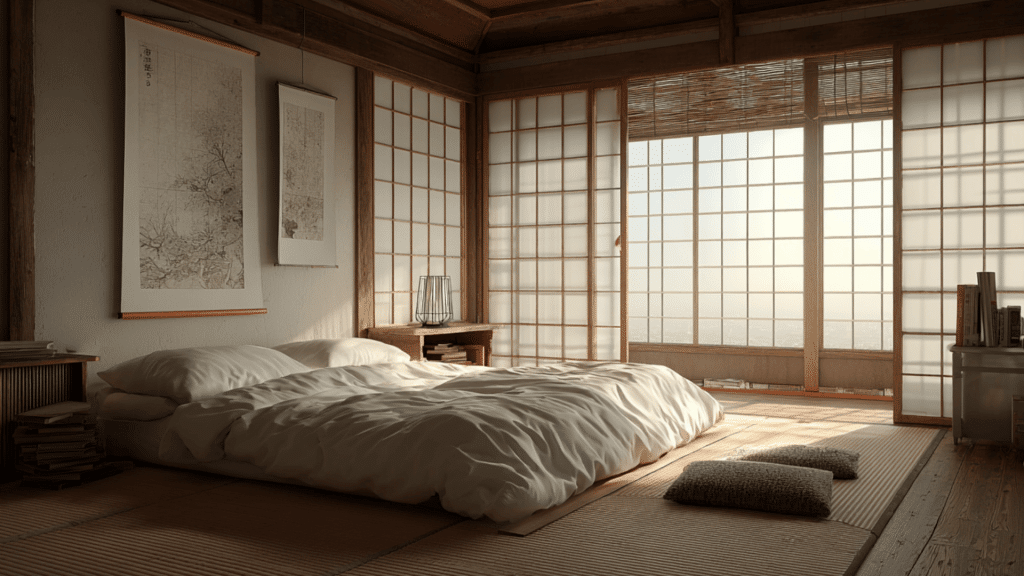
Tatami mats, made from rice straw, and coir mats, made from coconut fiber, are natural, breathable, and long-lasting. They provide a firm, even surface and allow gentle airflow beneath the mattress.
These are great for people who want a minimal, traditional look and prefer natural materials over synthetic ones.
4. Plywood or MDF Boards
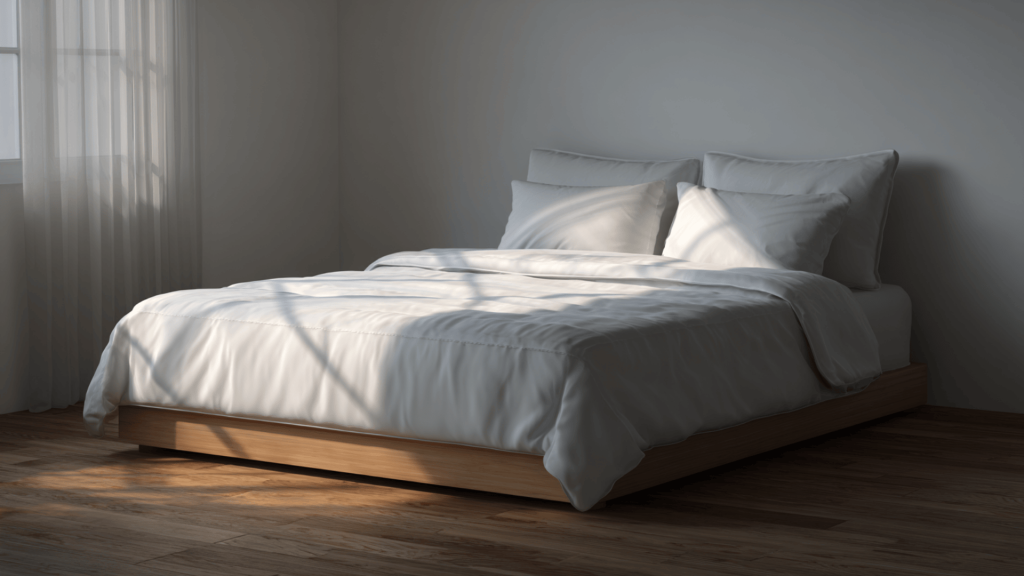
Flat boards offer a stable base for the mattress, spreading weight evenly and preventing dips. Plywood is lighter and more breathable, while MDF is denser and more stable but less moisture-resistant.
This option works well for those who want a smooth, solid base without spending on a full bed frame.
5. Foam Panels or Interlocking Mats
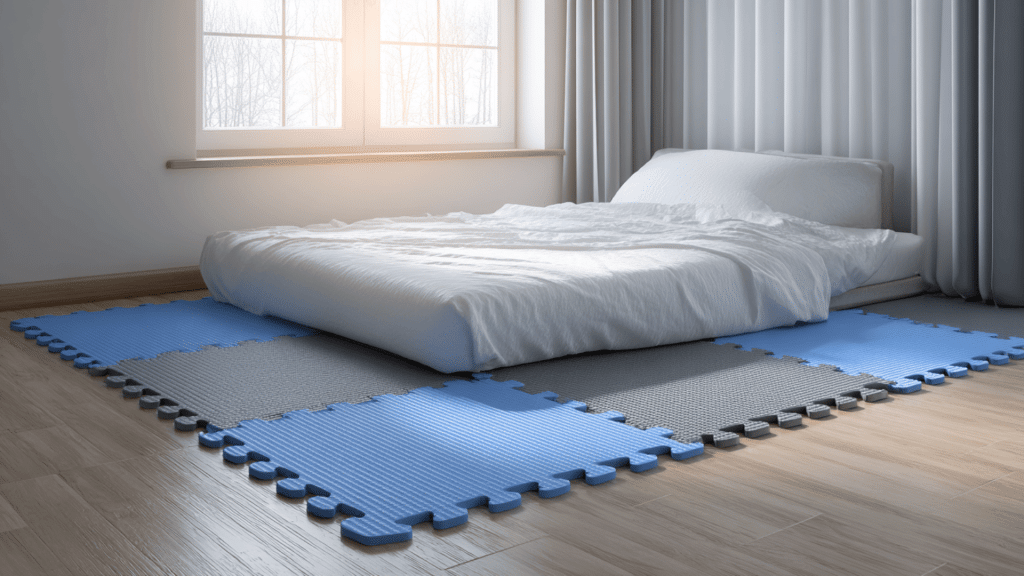
These add a thin layer of cushioning while insulating the mattress from the cold floor. Interlocking mats, often used for gyms, are easy to cut, move, and clean.
They’re ideal for renters, students, or anyone who wants a portable, temporary setup with a bit more comfort.
6. Pallet Beds
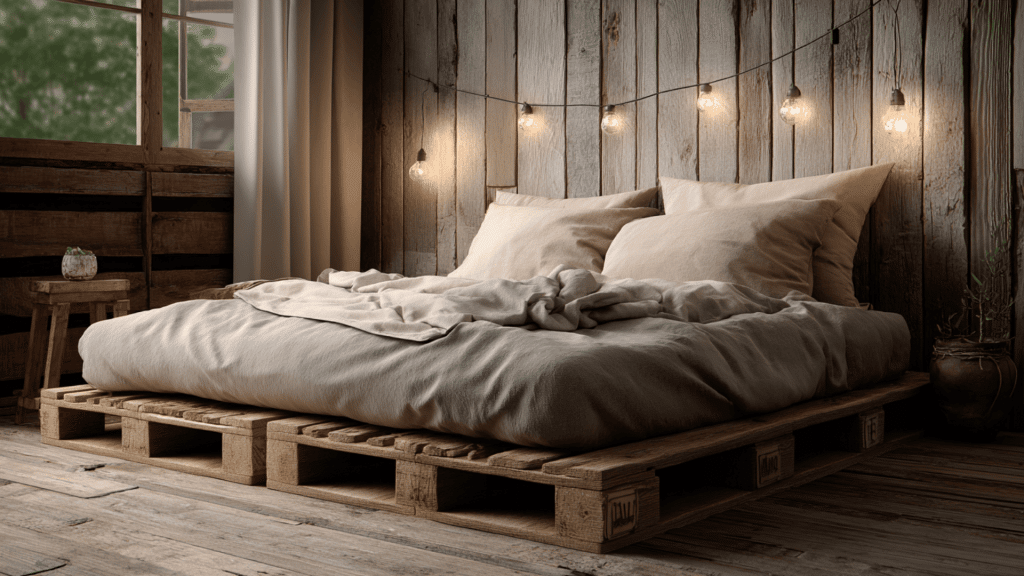
Wood pallets give a rustic, creative style while also allowing airflow. They can be stacked for height or placed in a single layer for a low, grounded feel.
Make sure they’re clean, smooth, and pest-free before use. They work well for people who like DIY projects and want a budget-friendly frame alternative.
7. Box Springs or Bunkie Boards
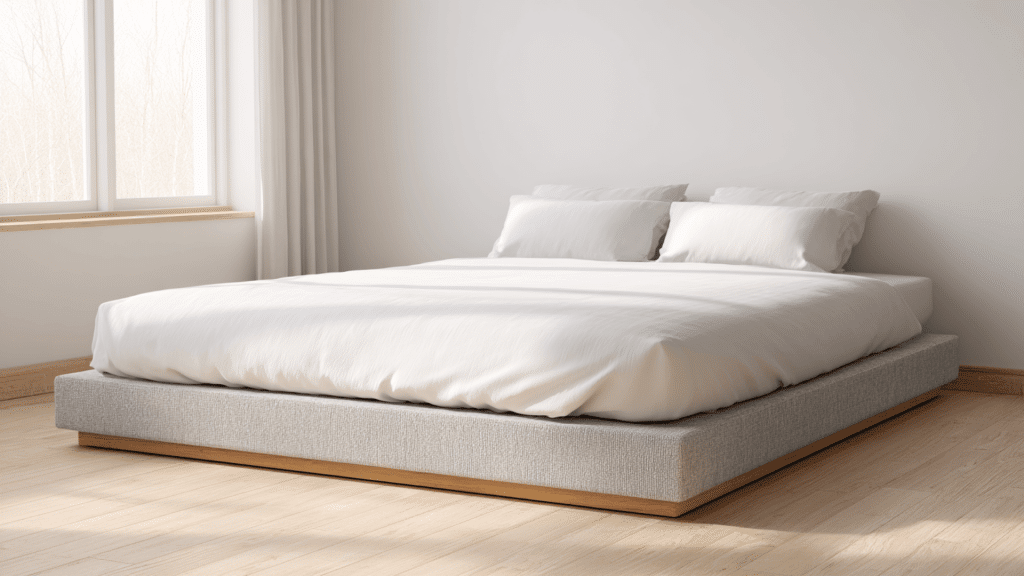
A box spring raises the mattress higher and provides extra bounce and support. A bunkie board is a thinner, flat version designed for platform beds or floor use.
These are great if you need more firmness or if your mattress warranty requires a specific type of support.
8. Under-Mattress Pads or Rug Underlays

Thick pads or anti-slip rug underlays create a small buffer between your mattress and the floor. They reduce dust transfer, add grip, and can offer minimal cushioning.
Best for people who want a low-profile option and don’t want to raise the mattress too much.
9. Adjustable Low Bed Frames
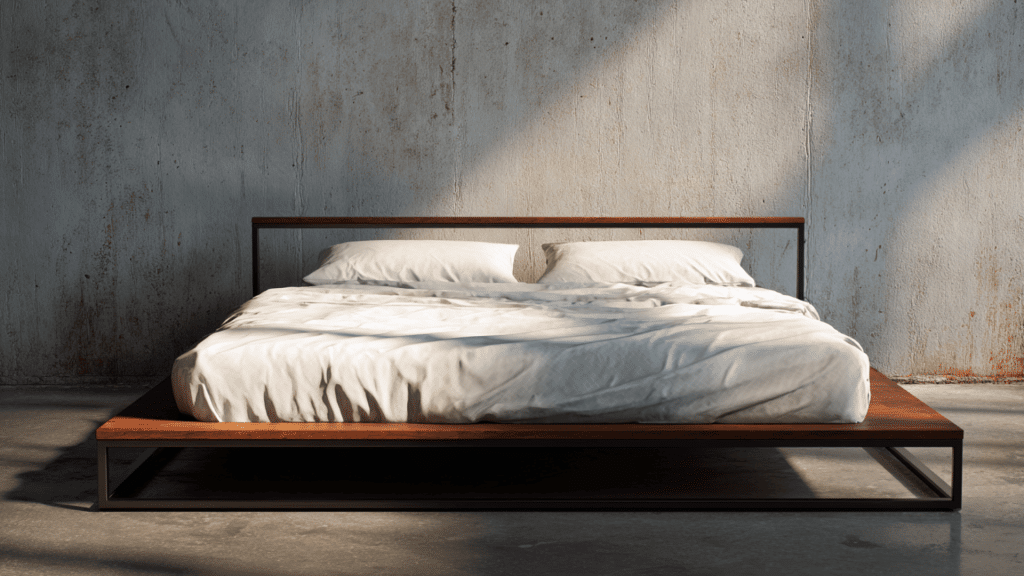
These give the look of a floor bed while still lifting the mattress slightly for ventilation. Many fold or disassemble for storage, making them ideal for small homes or temporary setups. Some models come with built-in slats for better airflow.
10. Elevated Platform Bases
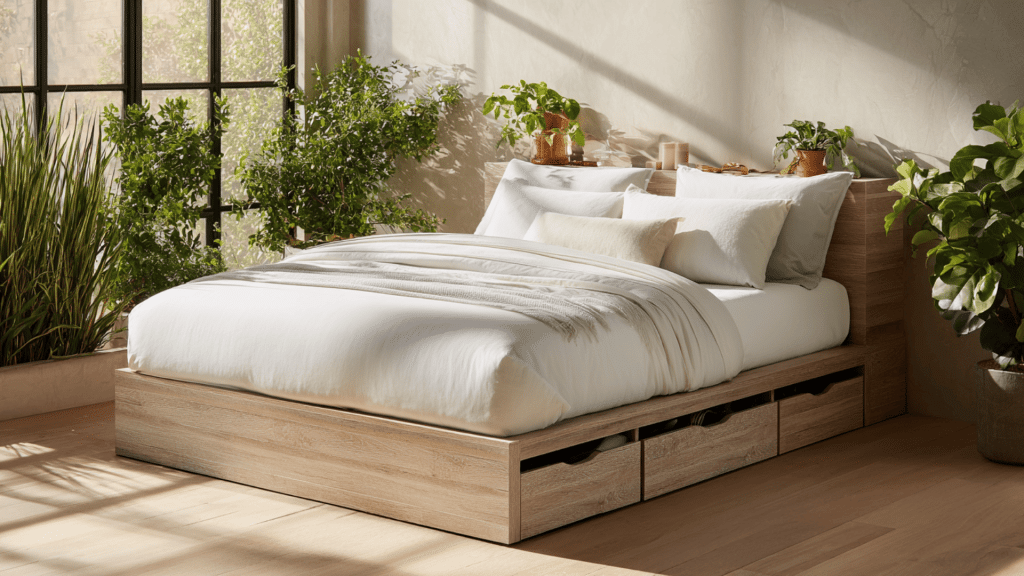
A platform base raises the mattress well off the floor, allowing plenty of airflow and often adding storage underneath.
They come in a variety of styles and finishes, so you can match your decor while also protecting your mattress. Best for those who want a permanent, stylish solution that combines comfort, function, and durability.
How to Choose the Right Option for Your Floor Type
The right under-mattress solution depends on your flooring, climate, and available space. Choosing carefully will help you protect your mattress, improve comfort, and extend its lifespan.
| Floor/Room Condition | Key Concerns | Best Options | Extra Tips |
|---|---|---|---|
| Hardwood or Tile Floors | Cold surface, higher moisture risk | Moisture barriers, tatami mats, slatted bases, foam panels | Use insulating layers to keep the bed warmer |
| Carpeted Floors | Dust buildup, slight cushioning already | Plywood boards, moisture barriers, under-mattress pads | Vacuum regularly under the mattress |
| Humid Climates | Mold, mildew, trapped moisture | Slatted bases, tatami mats, coir mats, pallets | Pair with a moisture barrier and use a dehumidifier |
| Dry Climates | Cold floors, dust | Foam panels, interlocking mats, plywood boards | Focus on insulation and dust protection |
| Small Rooms | Limited space, minimal height needed | Under-mattress pads, rug underlays, thin tatami mats, low bed frames | Keep a low profile to make the room feel bigger |
| Spacious Rooms | More room for bulkier bases | Elevated platform beds, pallet setups | Add storage or decorative elements under the bed |
By matching the right option to your floor type and environment, you’ll not only protect your mattress but also improve your sleep comfort. A well-chosen base or barrier will make a noticeable difference in both hygiene and durability.
Maintenance Tips for Mattress Longevity
Small habits can make a big difference in how long your mattress lasts. These steps help protect it from damage, improve hygiene, and maintain comfort.
- Mattress protector: Shields against spills, sweat, dust, and allergens while keeping the surface fresh. Opt for a waterproof yet breathable model and wash it every few weeks.
- Lift and air out: Raise the mattress every two to three weeks to allow airflow underneath, preventing trapped moisture, mildew growth, and musty odors from developing over time.
- Use a dehumidifier: In humid climates, reduce excess air moisture with a dehumidifier to lower the risk of mold or mildew forming inside and beneath your mattress.
- Rotate regularly: Turn the mattress every few months to distribute wear evenly, maintain consistent support, and slow down the natural sagging that happens with regular use.
By sticking to these routines, you’ll extend your mattress’s lifespan, maintain a healthier sleep environment, and keep your bed feeling comfortable for many years.
Wrapping Up
Knowing what to put under a mattress on the floor can make a big difference in keeping your bed clean, comfortable, and lasting longer.
I’ve found it really comes down to matching your setup to your floor type, climate, and budget, so it actually works for you.
I’ve given you practical options, from simple moisture barriers to full DIY platforms, that protect your mattress, improve airflow, and help you sleep better. Remember, moisture control and ventilation are key to avoiding mold and discomfort.
If you want more ways to create a healthier, more comfortable bedroom, read my other blogs for tips, guides, and inspiration to make your home feel its best.

